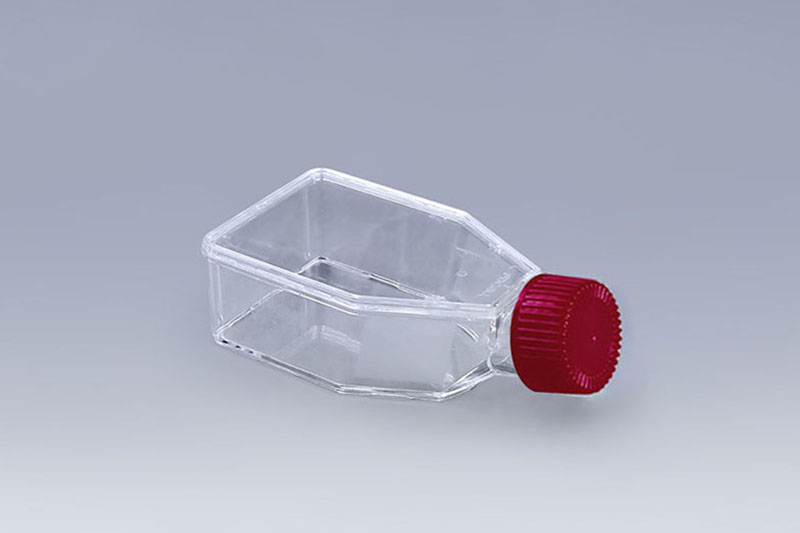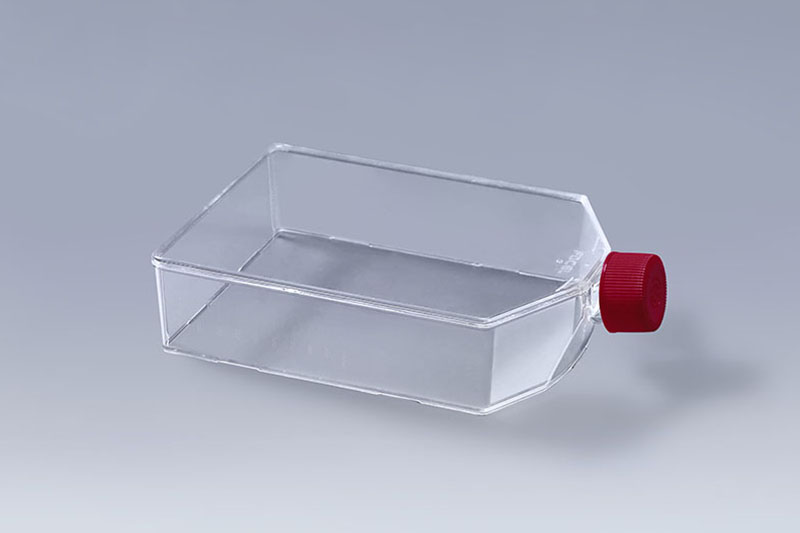Cell culture refers to a method of simulating the internal environment in vitro to enable it to survive, grow, reproduce and maintain its main structure and function. Various cell culture consumables are needed when culturing cells, among which cell culture flasks are used in a relatively large amount.
The shape of the cell culture flask is square with a wide neck, which is designed to facilitate cell harvesting. The side of the bottle is generally frosted, which is convenient for the operator to record. In terms of sizes, the common cell culture flasks are 25cm2, 75cm2, 175cm2, 225cm2, etc. The specification we usually refer to refers to the capacity of the medium that the bottle can hold. Depending on the specifications, there are different application scenarios.
The 25cm2 and 75cm2 small size bottles are mainly used for cell recovery and small-scale expansion, mainly in the early stage of cell culture. It can also be used as a storage container to store various red blood cells. The larger bottles of 175cm2 and 225cm2 are mainly used for medium-scale cell culture or eukaryotic protein expression. Protein expression refers to a molecular biology technology that uses bacteria, yeast, insect cells, mammalian cells or plant cells to express foreign gene proteins, and is one of the important components of genetic engineering technology.
Cell culture flasks are mainly used for the cultivation of adherent cells. Although different specifications have different uses, they must meet the growth requirements of cells, such as no DNase, no RNase, no endotoxin, no animal source, surface TC treatment, etc.
The FAI climbed 5.9 percent year-on-year in the first 11 months of 2018, quickening from the 5.7-percent growth in Jan-Oct, the National Bureau of Statistics (NBS) said Friday in an online statement.
The key indicator of investment, dubbed a major growth driver, hit the bottom in August and has since started to rebound steadily.
In the face of emerging economic challenges home and abroad, China has stepped up efforts to stabilize investment, in particular rolling out measures to motivate private investors and channel funds into infrastructure.
Friday's data showed private investment, accounting for more than 60 percent of the total FAI, expanded by a brisk 8.7 percent.
NBS spokesperson Mao Shengyong said funds into weak economic links registered rapid increases as investment in environmental protection and agriculture jumped 42 percent and 12.5 percent respectively, much faster than the average.
In breakdown, investment in high-tech and equipment manufacturing remained vigorous with 16.1-percent and 11.6-percent increases respectively in the first 11 months. Infrastructure investment gained 3.7 percent, staying flat. Investment in property development rose 9.7 percent, also unchanged.
 English
English



















































 T25 Flask
T25 Flask T225 Flask
T225 Flask